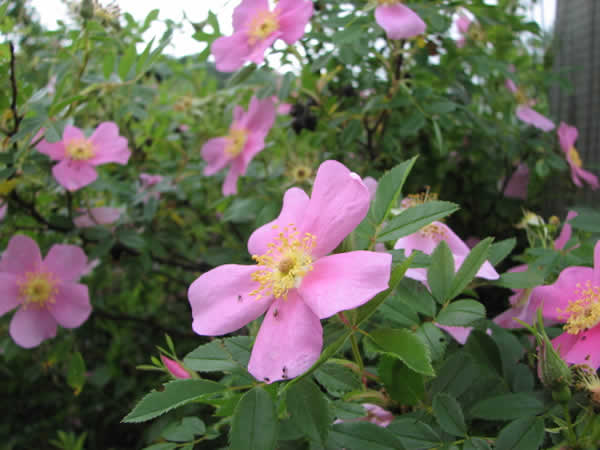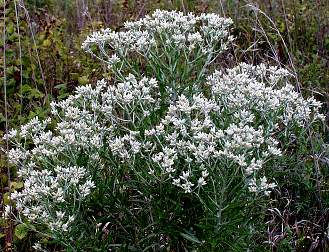Lemongrass Grown in Pots: Tips for Successful Cultivation
Lemongrass is a fragrant herb that is commonly used in Asian cuisine. It is known for its citrusy flavor and aroma, and is often used in soups, curries, and teas. While lemongrass is typically grown in tropical climates, it is also possible to grow it in pots in more temperate regions.

Growing lemongrass in pots is a great option for those who live in areas with cooler climates or who don’t have access to a large outdoor space. It is also a good option for those who want to have fresh lemongrass on hand for their cooking. With the right care and attention, lemongrass can thrive in a pot and provide a steady supply of fragrant leaves and stalks.
In this article, we will explore the benefits of growing lemongrass in pots, as well as the steps involved in planting and caring for this herb. We will also provide tips and tricks for keeping your lemongrass healthy and productive, so that you can enjoy its delicious flavor and aroma year-round.
Getting Started with Lemongrass

Lemongrass is a versatile herb that can be grown in pots both indoors and outdoors. Here are some tips for getting started with growing lemongrass in a pot.
Choosing the Right Container
When choosing a container for lemongrass, it is important to select a pot that is at least 12 inches deep and 12 inches wide. This will give the plant enough room to grow and spread out its roots. The container should also have drainage holes to prevent water from pooling at the bottom.
Selecting Soil and Preparing the Potting Mix
Lemongrass prefers well-draining soil that is rich in organic matter. A potting mix made from equal parts of compost, sand, and perlite is ideal for growing lemongrass. Before planting, mix the potting mix thoroughly and moisten it slightly.
Planting Lemongrass Seeds or Stalks
Lemongrass can be grown from seeds or stalks. To grow lemongrass from seeds, plant the seeds about ¼ inch deep in the potting mix and keep the soil moist. Seeds typically take about 2-3 weeks to germinate.
To grow lemongrass from stalks, select a fresh stalk that is at least 12 inches long and has a few inches of root attached. Plant the stalk in the potting mix so that the roots are covered and the top of the stalk is just above the soil surface. Water the plant thoroughly and keep the soil moist.
Conclusion
Growing lemongrass in a pot is a great way to enjoy this versatile herb all year round. With the right container, soil, and planting method, anyone can grow lemongrass from seed or stalks in a pot indoors or outdoors.
Caring for Lemongrass in Pots
Lemongrass is a popular herb that is commonly used in Asian cuisine and has a refreshing lemony flavor. It is easy to grow in pots and can be harvested throughout the year. However, proper care is essential to ensure healthy growth and optimal yield. In this section, we will discuss the various aspects of caring for lemongrass in pots.
Watering and Moisture Management
Lemongrass requires regular watering to maintain healthy growth. It is important to keep the soil moist but not waterlogged. Overwatering can lead to root rot, which can be fatal for the plant. It is recommended to water the plant deeply once a week, allowing the soil to dry out slightly between watering sessions. During hot and dry weather, the plant may require more frequent watering.
Ensuring Proper Light and Temperature
Lemongrass requires full sun to thrive. It should be placed in a location that receives at least 6 hours of direct sunlight per day. The plant prefers warm temperatures and is frost-sensitive. It should be protected from frost and cold drafts during winter.
Fertilizing and Pruning for Healthy Growth
Lemongrass requires regular fertilization to maintain healthy growth. A nitrogen-rich fertilizer should be applied every month during the growing season. Pruning is also important to promote new growth and prevent the plant from becoming too leggy. The plant should be pruned to a height of 6-8 inches every spring.
Protecting Lemongrass from Pests and Diseases
Lemongrass is generally pest and disease-resistant, but it can be affected by rust fungus and spider mites. Rust fungus appears as orange spots on the leaves and can be treated with a fungicide. Spider mites can be controlled with insecticidal soap or neem oil.
Winter Care and Overwintering Strategies
Lemongrass can be overwintered indoors, outdoors, or in a greenhouse. If overwintering indoors, the plant should be placed in a location that receives bright, indirect light and kept away from cold drafts. If overwintering outdoors, the plant should be protected from frost and cold weather. Mulching and adding manure to the soil can help protect the plant during winter.


